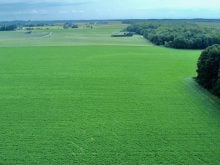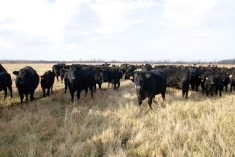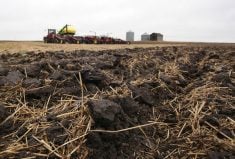McCain Foods now has standards around regenerative agriculture, informing potato growers how they must change or improve their practices in the coming years.
Last year, McCain’s said 100 percent of its potato acreage (worldwide), will be grown by producers who follow the principles of regenerative agriculture.
On June 8, the company spelled out the details of that promise — with a list of expected practices and goals.
“We have made a big commitment to regenerative agriculture, and launching our Framework is the foundation that will allow us to share our vision with our entire grower community,” says Philippe Thery, global chief agriculture officer for McCain Foods. “It is key that our farmers understand what is expected of them, with the assurance that we will be there to support them on every step of this journey and that it makes economic and agronomic sense.”
Read Also

Farmers asked to keep an eye out for space junk
Farmers and landowners east of Saskatoon are asked to watch for possible debris in their fields after the re-entry of a satellite in late September.
Regenerative agriculture is not well defined, but it’s often described as practices that improve soil health and reduce dependence on fertilizer, pesticides and other crop inputs. Practices include things like cover crops, reduced tillage, diverse crop rotations and including livestock in the production system.
A roster of major food companies, including General Mills, PepsiCo and Cargill, have promised to increase adoption of regenerative ag within their supply chains, to make food production more sustainable.
Through its framework, McCain’s is defining its vision for regenerative ag.
The company has created the following standards and objectives for farmers who produce potatoes for the company:
- armoured (covered) soils, preferably with living plants
- enhanced crop diversity
- minimized soil disturbance
- reduced toxicity of pesticides
- enhanced farm and ecosystem biodiversity
- reduced agro-chemical impact and optimize water use
- increased soil organic matter
McCain’s standards fill in the details of what it expects. For example, enhanced crop diversity means a farmer must grow four different species of crops, including a grass and a legume.
A grower who has four different crops in a rotation qualifies as a “beginner.” To reach the level of “master” regenerative grower, a farmer must include six crops in the rotation.
“Each indicator has four levels: On-boarding, Beginner, Master and Expert,” McCain’s says in a release. “To enter the framework at the on-boarding level, farmers must have received training, completed a soil health assessment and meet at least one of the Beginner indicators of their choice. To progress, a farmer must then meet five of the seven indicators to move into the Beginner level.”
Last year, McCain’s began testing its approach to regenerative agriculture at its Farm of the Future in Florenceville, N.B. The company is experimenting with cover crops for green manure, controlled traffic farming, including cattle in the system, reducing use of nitrogen fertilizer and other practices.
McCain’s move to regenerative agriculture will affect hundreds of potato growers in Canada, and the United States. The company is the largest manufacturer of frozen potato products and operates production plants Idaho, Maine, Nebraska, Washington and Wisconsin.
In Canada, McCain’s has potato processing plants in Alberta, Manitoba and New Brunswick.


















